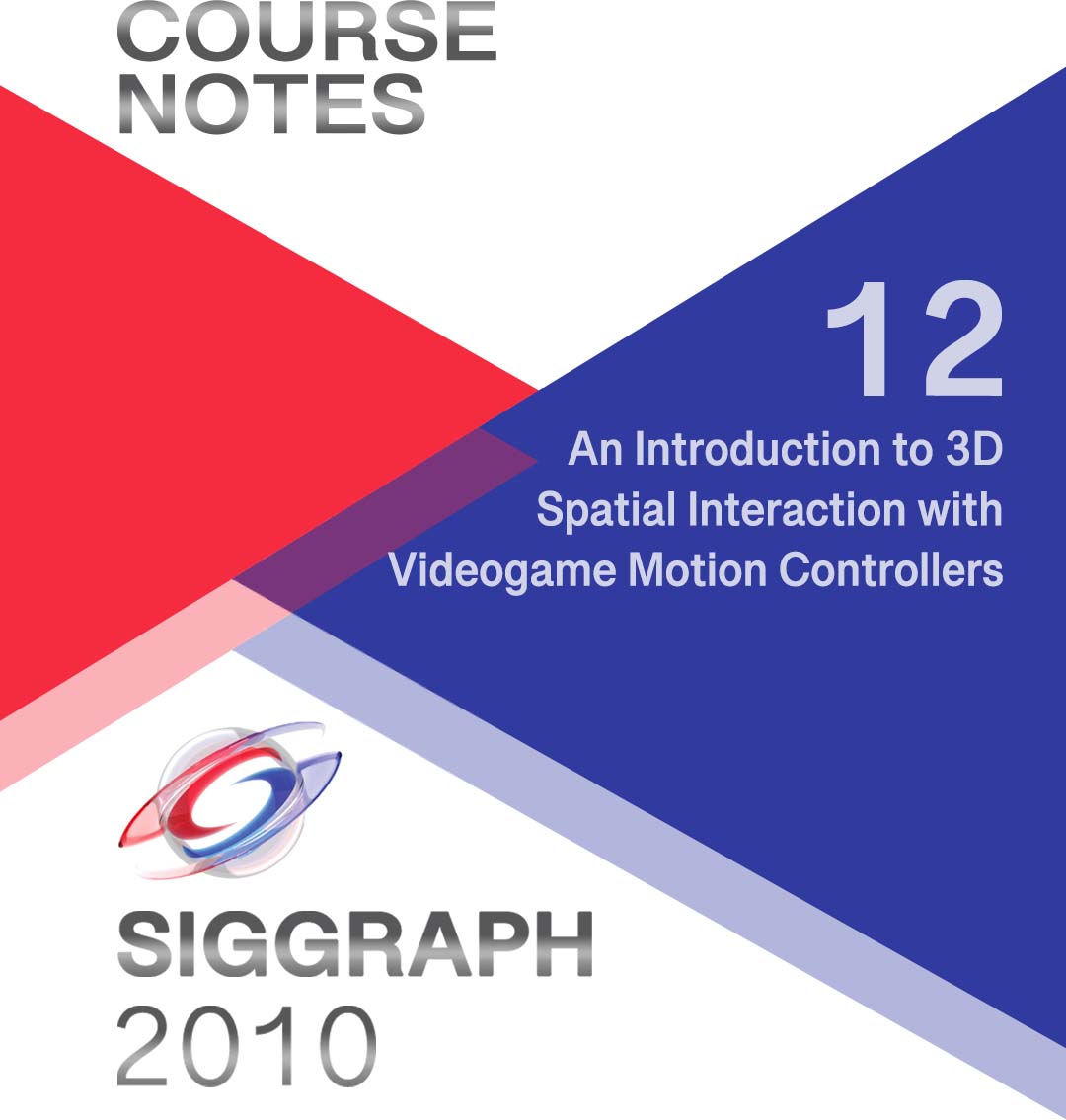“An Introduction to 3D Spatial Interaction With Videogame Motion Controllers” by LaViola and Marks
Conference:
Type(s):
Entry Number: 12
Title:
- An Introduction to 3D Spatial Interaction With Videogame Motion Controllers
Course Organizer(s):
Presenter(s)/Author(s):
Abstract:
Description
Three-dimensional interfaces use motion sensing, physical inputs, and spatial-interaction techniques to effectively control highly dynamic virtual content. With the advent of the Nintendo Wii, the Sony EyeToy, and a host of soon-to-be-released peripherals such as the Playstation Motion Controller, Microsoft’s Natal, and Sixense’s TrueMotion, game developers, researchers, and hobbyists are challenged to create compelling interface techniques and game-play mechanics that make use of this technology. Researchers in the fields of virtual and augmented reality as well as 3D user interfaces have been working on 3D interaction for nearly two decades. The techniques, interaction styles, and metaphors developed in these communities are directly applicable to games that make use of motion-controller hardware. This course demystifies the workings of current video game motion controllers and provides a thorough overview of the techniques, strategies, and algorithms used in creating 3D interfaces for tasks such as 2D and 3D navigation, object selection and manipulation, gesture-based application control, and character control. It summarizes the strengths and limitations of various motion-control sensing technologies in today’s and soon-to-be-released peripherals, including accelerometers, gyroscopes, and 2D and 3D depth cameras. It also presents techniques for compensating for their deficiencies, including gesture recognition and non-isomorphic control-to-display mappings. Course materials include detailed notes and demonstration videos.




